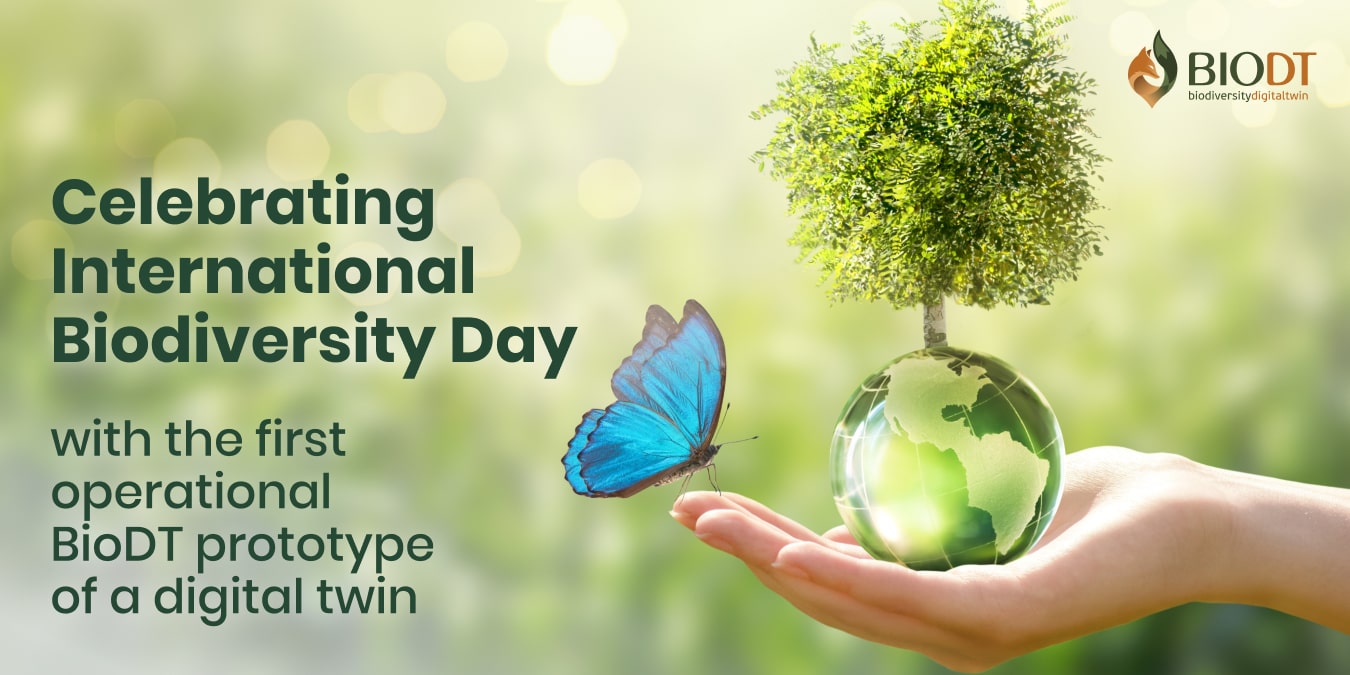
May 22 marks the International Biodiversity Day, a day dedicated to raising awareness about the importance of biodiversity and the need to protect the diverse ecosystems that sustain life on Earth. This year's theme, "Be part of the plan" underscores the urgent need for collective efforts to end the loss of biodiversity and restore the health of our planet.
Biodiversity, the variety of life on Earth, is essential for ecosystem resilience, human well-being, and the balance of our natural world. From the smallest microorganisms to the largest mammals, every species plays a crucial role in maintaining ecological balance and supporting human livelihoods. Yet, biodiversity is under unprecedented threat from human activities, including habitat destruction, climate change, pollution, and overexploitation of natural resources.
BioDT pollinators prototype digital twin: towards groundbreaking insights into honey bee performance
One of the most endangered species is honey bees. They face numerous challenges, including intensive agriculture, diseases, and fluctuations in nectar and pollen availability. The Digital Twin prototype will assess landscape quality to provide practical insights into honey bee performance and honey production.
Honey bees, or Apis mellifera, are vital pollinators and honey producers. Their well-being is closely tied to the landscapes they inhabit, where a continuous supply of nectar and pollen is essential, especially during periods when mass-flowering crops like oilseed rape are unavailable.
The Horizon Europe BioDT project proudly introduces the first operational prototype Digital Twin, designed to address crucial biodiversity management challenges. Focused initially on assessing honey bee performance in Germany, this innovative tool combines practicality with advanced technology to provide actionable insights for conservation.
A look at the technical development
This first Biodiversity Digital Twin prototype relies on a robust technical foundation. Custom scripts have been meticulously crafted to specify input data (drivers) and transform it into readable input files to run the established honey bee model BEEHAVE that has been implemented in NetLogo. All the required software components for model execution, including NetLogo, Java, R, and other essential packages, have been bundled into a Docker container image. This container can be seamlessly deployed and executed on the LUMI supercomputer through Apptainer/Singularity and on cloud platforms through Docker.
One of the technical challenges addressed by BioDT is to support use cases requiring the processing of a large volume of input data. For example, the Digital Twin prototype on honey bee survival could ultimately be used to process datasets spanning several countries. As a step to account for this when developing the first Digital Twin prototype, the BEEHAVE model can be executed in parallel on supercomputers such as LUMI by distributing tasks across up hundreds or even thousands of cores. This advancement has enabled the extension of BEEHAVE's application from isolated, individual locations to generating national-scale estimates of honey bee viability. Containerising the model enables it to be run on different supercomputers with minimal machine-specific tailoring. This ensures efficient and timely results for the simulation of honeybee survival at the national scale.
"This Digital Twin prototype represents a fusion of advanced technology and practicality to allow a generic assessment of agricultural areas for honey bee health," says Dr. Jürgen Groeneveld from the Helmholtz Centre for Environmental Research - UFZ in Leipzig. "By providing tools that are accessible, scalable, and adaptable, we aim to empower biodiversity researchers and conservationists in their mission to protect our planet's vital ecosystems."
For technical enthusiasts and collaborators, the prototype codebase is available via the BioDT GitHub organisation.
The road ahead
One of the remarkable features of this Digital Twin is its adaptability to other regions. Given the availability of data on land cover, conversion of land cover types into nectar and pollen resources, and weather data, this digital twin can be adapted for diverse geographic areas. This opens up possibilities for researchers and conservationists worldwide to leverage BioDT's capabilities in their biodiversity conservation efforts.
The prototype now makes it possible to take advantage of the dynamic and large-scale model-data fusion that characterises Digital Twins. Mismatches of the model with data that link colony performance to specific land use types and climatic conditions will be used to continuously improve the models realism and for re-calibration.
"We are thrilled to unveil our first operational prototype Digital Twin, a tangible step forward in our commitment to demonstrate how Digital Twin technologies could benefit biodiversity conservation. Moving ahead, we anticipate to develop further iterations of this prototype and to extend our mission beyond honey bee performance. We also envision the development of further prototype Digital Twins, each addressing critical biodiversity challenges." says Jesse Harrison, Developer Manager at CSC and former Project Manager of BioDT.
As the BioDT project continues to evolve, it promises to play an active role in driving evidence-based solutions for biodiversity protection and restoration, in the wider context of the EC-funded Destination Earth initiative.
Test the first BioDT prototype Digital Twin on pollinators now.
Biodiversity in Focus: exploring the BioDT Pollinator prototype Digital Twin
To remind about the crucial role pollinators play in restoring biodiversity globally, this 22 May at 10AM (CEST) join us for a free, one-hour webinar exploring the BioDT prototype Digital Twin (pDT) for Pollinators.
This insightful webinar offers you a unique opportunity to:
- Gain a deeper understanding of the BioDT project and its mission to promote biodiversity.
- Explore the technical details behind the Pollinator pDT.
- Witness a demonstration of the pDT's interactive Shiny app, allowing you to explore its functionalities firsthand.
- Learn how the pDT integrates with other BioDT digital twins.
- Participate in a live Q&A session with our expert team.
Register for the BioDT Pollinator pDT webinar today and help us build a future where pollinators, and all life, can thrive.
Follow BioDT
X: https://x.com/BiodiversityDT
LinkedIn: https://www.linkedin.com/company/biodt/
YouTube: https://www.youtube.com/channel/UCqKjtPwy2Tu9lg2sAx1piIA
Contacts
Dr. Gabriela Zuquim, CSC (Scientific Coordinator) gabriela.zuquim@csc.fi
Rita Giuffrida, Trust-IT Services (Communications Manager) r.giuffrida@trust-itservices.com
Dr. Jürgen Groeneveld, Helmholtz Centre for Environmental Research - UFZ juergen.groeneveld@ufz.de